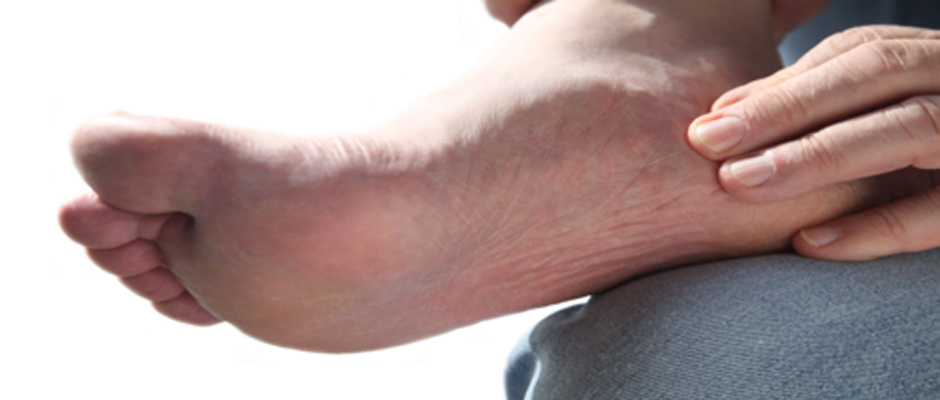Definition: inflammation of the plantar fascia at the bottom of the foot; sometimes associated directly with plantar fasciitis.
Medical terminology: heel pain, heel spur syndrome, plantar fasciitis

Do you ever suffer from sore, painful heels after long periods of standing or walking? Are you experiencing heel pain upon standing first thing in the morning? Is the back of your heel sore or painful? If so, you are experiencing one of the many symptoms of heel pain.
Types of Heel Pain Include:
[reveal title=”General Heel Pain” open=”false” color=”grey-lite”]During periods of walking, running or even standing, large amounts of pressure are placed on the heel of the foot. This repetitive pressure can cause soreness of the heel.
As the body ages, the natural cushioning around the heel disappears which can also lead to general heel pain.[/reveal][reveal title=”Plantar fasciitis” open=”false” color=”grey-lite”]Plantar fasciitis is the inflammation of the dense band of tissue called the plantar fascia, which extends from the bottom of the heel bone to the base of the toes. Excessive pulling and stretching of the plantar fascia can cause inflammation and irritation can lead to heel pain, arch pain or even the growth of a bone spur.
[/list][/reveal][reveal title=”Heel Spur Syndrome” open=”false” color=”grey-lite”]A heel spur (calcaneal spur) is a small bony growth located on the heel bone (calcaneus). Repetitive press and excessive pulling of the plantar fascia on the heel bone can lead to calcium deposits on the bottom of the heel (bone spur). This can make it difficult to bear weight on the affected heel making walking or exercise difficult to do.
Heel spurs can also be associated with some medical conditions such as ankylosing spondylitis.
Radiological examination (x-ray) can be used to detect a heel spur.[/reveal][divider_line type=”divider_blank”]
Treating Heel Pain
Heel pain responds well to conservation, non-surgical treatment. It is important to be assessed by a foot specialist to determine what is the root of the problem so the proper treatment plan can be used for you. The Foot Guy offers many different treatment options to help with heel pain:

